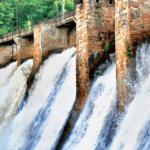Just months after the two devastating earthquakes, Nepal is entangled in yet another spell of turbulence. With agitations in theTerai-Madhes region nearing the three month mark and the crisis that has been looming large over the country since the promulgation of the long-awaited constitution, the economy has been pushed to the brink.
Businesses Choke Under Crisis: With supply disruptions beginning on the 21st of September, just a day after the constitution promulgation, crippling fuel shortage and lack of raw materials have led the private sector to incur huge losses. 90% of all industries in the Terai region have remained closed and it is estimated that the country is losing NPR 2 billion (USD 19 million) every day. Importers have been facing demurrage charges of up to NPR 40 million per day for goods stalled at the Kolkata port; Nepal’s key route for international trade. Putting it in perspective, the total demurrage cost incurred by importers since the promulgation of the constitution could alone amount to NPR 1.8 billion (USD 17 million), a figure comparable to almost 1,829 tankers worth of diesel. Similarly, the total loss during this period could amount up to NPR 90 billion (USD 862. million), which is little over 90% of the amount allocated for education sector in the budget for FY 2015-16.
The supply disruption, closure of industries and the subsequent impact on the economy has taken place at the most critical time of the year. The three month period in the first half of the fiscal year which starts with festivals like Dasain, Tihar and Chhath accounts for almost 60% of the yearly sales for businesses which further spills over into the wedding season. With the Dasain festival over under the shadow of the crisis and no sight yet of a swift resolution to the protracted deadlock, the impact on the economy will be far reaching.
Shortage of construction material and fuel are making their effects felt in the construction business which was expected to boom as the post-quake reconstruction gained momentum. A large number of construction workers in Kathmandu valley and in other parts of the country are from the Terai-Madhes region and from the border areas in India. Escalation of the ongoing crisis could possibly lead to these workers feeling insecure and returning to their regions, which couldhave an even greater impact on the construction businesses in various parts of the country.
Fiscal Outlook Grim: The Central Bank has potrayed a grim scenario where the economy may perhaps be heading towards negative growth. Both revenue collection as well as expenditure by the government has declined in the first three months of FY 2015-16 due to the ongoing crisis. In the first quarter of this fiscal year, the government revenue collection stood at NPR 76 billion (USD 725 million) against the target of NPR 96 billion (USD 917 million). The shortfall in revenue collection can be attributed to a fall in customs revenue and Value Added Tax (VAT) which are the major sources of government revenue.
On the other hand, as of the end October 2015, barely 3.5% of the total capital expenditure target has been spent, the impact of which is visible in the slowdown of various infrastructure and development projects.
Major Impact on Agriculture: The impact of the crisis on the agriculture sector- which employs over 70% of the population – is expected to compound the growth challenges that the sector is already facing given the poor monsoon, and the significant damages caused by the twin earthquakes. The crisis resulted in a shortage of chemical fertilizers and pesticides, and has disrupted market access for farm produce which is likely to have a negative impact on farm income. The shortage of fuel has also affected supply of livestock feed and other raw materials required for livestock and dairy farming. Difficulties in collecting milk from different parts of the country and operating milk processing units due to fuel shortage and load-shedding have also strained the dairy business.
As the harvesting season approaches, agriculture sector is reeling with shortage of fuel required for harvesting as well as bringing in agricultural equipment that are generally leased from India and transporting the harvest. The ongoing crisis is also expected to have a substantial impact on winter plantations which are due to start soon.
Tourism Nosedives: Tourism sector’s hopes of recovering in the peak tourist season of autumn following the impact of the earthquakes have been dented by the current crisis. The average occupancy rates in the first two months of FY 2015-16 of tourist standard hotels stood at a lowly 30%. The number of tourists visiting the country in 2015 is likely to see a 50% drop to around 400,000 compared to 800,000 in the previous year. The impact on the tourism sector is multi-dimensional as there are many people who are dependent indirectly on Tourism as source of livelihood.
Energy Problem Compounded: With the country already reeling under nearly 12 hours of daily powercuts, the halt in construction of hydropower projects in various parts of the country; due to the lack of raw materials, equipment and fuel, has hit the energy sector hard. The delay in reconstruction of quake-damaged hydropower projects has been adversely affected, leading to revenue loss of around NPR 2.5 billion (USD 24 million). Several ongoing projects which were expected to be connected to the national grid this fiscal year, with a combined capacity of 100MW have been affected due to the crisis and are expected to lose around NPR 3 billion (USD 28.73 million). The total combined loss of revenue of hydropower projects amounts to NPR 5.5 billion (USD 53 million), a figure which is almost 79.5% of Nepal Electricity Authority (NEA)’s gross profit in FY 2014-15.
Unlearnt Lessons from the Past: The economy which is already reeling under pressure due to delayed post-quake reconstruction and poor monsoons has been severely choked by the protracted crisis leading central bank officials to suggest a possibility of negative growth this fiscal year. The government had set a growth target of 6% for this fiscal year. In its South Asia Economic Focus Fall 2015 report published on October 4, the World Bank (WB) projected the country’s growth rate to dip to 3.7% due to the host of problems facing the economy since the April earthquake.
With crisis looming large over the country, it is evident that we have not been able to align our priorities and policies in order to provide cushion to the economy when faced with contingencies. History is witness to the fact that Nepal has had the opportunity to learn from circumstances like this, especially from the economic blockade of 1989, but just like in the case of earthquake preparedness, we discount the possibility of such events in the future when the dust from the present storm calms down.
Nepal Economic Forum (NEF) remains committed towards conducting economic impact assessments of the present crisis as well as contributing towards the discourse for long term strategy building in order to better prepare Nepal for any future shock. We look forward to engaging with our partners and donors in the course of our efforts.
Tejeshwi served as a NEF Fellow during 2015-16. He has a master’s degree in international economic policy from SciencesPo – Paris School of International Affairs and has previously worked at the International Labour Organisation’s Regional Office for Asia and the Pacific covering areas such as labour market policies, wages and employment, future of work, leveraging technology as a driver of formality, and labour force surveys for countries in the Asia Pacific region. At present, he works as an economist at the Embassy of Switzerland in Nepal supporting the employment and income domain of Swiss Cooperation in Nepal with a focus on private sector development, innovative development finance, and SME-led growth. Tejeshwi also serves as the focal point for Swiss-Nepal trade and investment relations promoting greater cross-border economic cooperation.





